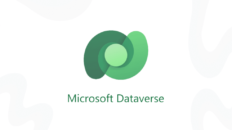By Hiran de Silva
Once upon a time, Microsoft built tools that quietly ran the world. Tools like Excel and Access weren’t flashy—they were functional. They empowered real professionals in finance, operations, and analysis to build, automate, and scale processes that ran entire departments. And they did so without needing a PhD in data science or a call to IT.
But that was before the algorithm.
Today, Microsoft’s development priorities appear driven less by enterprise users and more by the dopamine-fueled logic of social media engagement. Tools are now built not for scale, security, or system integration—but for TikTok tutorials, shiny demos, and influencer hype.
Let’s take a hard look.
Power Query: A Shiny Tool With Rusty Gears
Power Query is a perfect case study in this descent. It was marketed as Excel’s “modern” answer to data transformation. Influencers hailed it as a miracle. Social media exploded with demonstrations. But here’s the reality in the enterprise:
- It doesn’t scale easily.
- It’s trapped inside individual workbooks.
- It creates brittle workflows.
- It breaks when shared beyond a single user.
In short, it’s a YouTube hit but an enterprise liability. The very flexibility and control that Excel’s enterprise users relied on—ADO, SQL queries, VBA-backed automation—has been buried under layers of opaque GUIs and simplified wizards designed to impress the uninformed.
Dataverse: The Locked Garden That Nobody Asked For
Then there’s Microsoft’s push from Access to Dataverse. Access, for all its retro charm, was a workhorse—a relational database within reach of business professionals. It allowed for rapid prototyping, innovation, and delivery of real, working systems without a six-month IT project or a platform license audit.
Dataverse, on the other hand, is a walled garden. Accessing it requires authentication hurdles, licensing costs, governance approval, and an understanding of a sprawling, complex ecosystem designed for Microsoft consultants—not the business user trying to build a budget system before Friday.
In the name of modernization, Microsoft has effectively pulled the ladder up behind them. The same company that won the enterprise by empowering clever people in the business to solve problems is now stifling them in favor of tools that demo well on stage but deliver nothing on the ground.
Why This Is Actually Great News—for the Right People
And yet, ironically, this tragic drift opens up a golden opportunity.
Because the contrast has never been clearer.
Those who understand the real, robust, scalable principles of enterprise architecture—the power of Excel as a front-end, and Access or SQL as a backend—are now in a perfect position to shine. While the herd chases the next shiny object, those who stay grounded in tried-and-tested methods can deliver miracles.
You can now:
- Prototype enterprise systems in days, not months.
- Show up with working solutions, while others pitch wireframes and buzzwords.
- Dominate in the budgeting, reporting, and automation space, because you actually understand what the business needs.
In fact, the very absurdity of Microsoft’s current direction makes the superiority of real enterprise-grade Excel solutions laughably easy to demonstrate.
Closing Thought: There Are Two Excels Now
There’s the social media Excel—shiny, flashy, clickbaity, and brittle.
And then there’s enterprise Excel—quiet, powerful, scalable, and still unbeaten.
Microsoft may have forgotten who built their empire. But the opportunity for those who remember has never been bigger.
The race to the bottom is on. But those who rise above will own the future.






Add comment